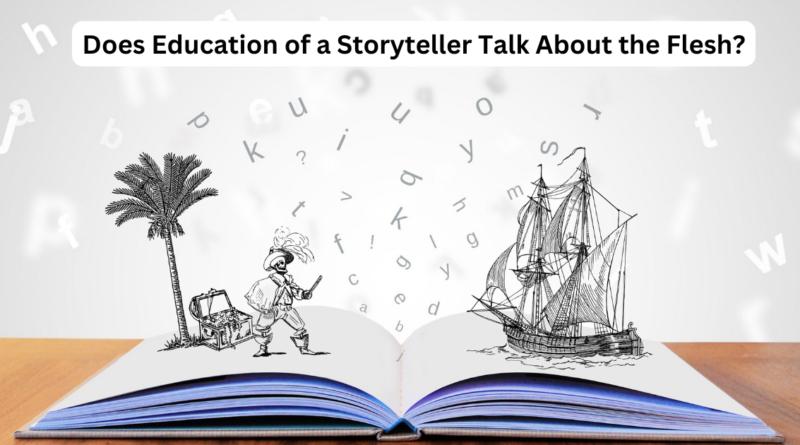Does Education of a Storyteller Talk About the Flesh?
Storytelling is like sharing a fun or important tale with others. It’s been around for a very long time, and it helps us understand each other and learn new things. But when people learn how to become good storytellers, do they also talk about the flesh, or Does Education of a Storyteller Talk About the Flesh? Let’s find out!
What Do Storytellers Learn?
Before we can answer whether the education of a storyteller talks about the flesh, we should know that when people go to school or classes to learn how to tell stories, they learn many things. They learn how to make their stories enjoyable, create characters (the people in their stories), and keep people’s attention. They also practice making their stories exciting and fun. But does this learning include talking about the flesh or the body?
The Flesh in Stories
When we talk about “the flesh,” we refer to the human body—its sensations, movements, and physical presence. The body is a powerful tool in storytelling because it helps ground the story in reality. But does education of a storyteller talk about the flesh directly?
Sometimes it does. For example, in some traditional storytelling, how a storyteller uses their body—like how they move or act out parts of the story—can make the story more exciting. In these cases, the body is important for telling the story.
Why Physical Storytelling Matters
Understanding how our bodies and senses affect storytelling can help us become better storytellers. When we’re aware of how our physical presence influences our storytelling, we can use it to our advantage. Here are a few reasons why this matters:
Engagement
Using our bodies and senses in storytelling makes the experience more engaging because it adds a layer of dynamism and interaction. When you physically act out parts of a story, like mimicking a character’s actions or using expressive gestures, it helps paint a vivid picture for the audience. This is similar to how watching a live performance or a movie involves more than just listening to dialogue; the visual and physical elements make the story come alive. When people see and hear these added details, they feel more involved and connected to the story, which keeps their interest and makes the narrative more memorable.
Expression
Our physical actions and expressions can convey a range of emotions and subtleties that words alone might not fully capture. For example, when telling a story about excitement, your enthusiastic voice, wide eyes, and energetic movements can help convey that feeling more effectively than simply describing it. These non-verbal cues provide additional context and depth to the story, allowing the audience to understand and experience the emotions on a deeper level. Imagine reading a sad story without any emotional expressions or gestures—it’s harder to feel the sadness. But with a somber tone and appropriate body language, the emotion becomes much clearer and more impactful.
Connection
Being aware of how we use our bodies while telling a story helps create a stronger connection with the audience. This connection is built through the shared experience of the storytelling process. When storytellers use expressive gestures, facial expressions, and varied tones of voice, they bridge the gap between themselves and their audience. This makes the storytelling feel more personal and engaging. Just like when a teacher uses animated gestures to explain a concept, it makes the lesson more interesting and easier to understand. When the audience feels a connection, they are more likely to enjoy and remember the story, making the overall experience more enjoyable and impactful for everyone involved.
How the Body Shows Up in Modern Stories

The body is still important in today’s books, movies, and shows. Characters might be heroes who fight battles or friends who hug each other. The things characters do with their bodies help make the story interesting. But does education of a storyteller talk about the flesh in modern times?
In many writing classes, storytellers learn to describe what characters see, hear, smell, taste, and touch. This helps make the story feel real and helps the reader or viewer imagine the scene better. So, even if they don’t talk about the flesh directly, they are still thinking about how the body experiences things.
Why Talking About the Body/Flesh Is Important
So, why is it important to think about the flesh or body in storytelling? Because our bodies are how we experience the world! We feel happy, sad, tired, and excited through our bodies. If storytellers understand this, they can tell stories that feel more real and connect better with their audience.
So, why does education of a storyteller talk about the flesh so that we can understand the important part of stories, getting sick, growing up, or facing challenges? This makes stories more powerful and helps us know what the characters are going through.
Conclusion
In conclusion, does education of a storyteller talk about the flesh? Sometimes it does. The body is an important part of storytelling because it helps us understand what’s happening in the story. Whether through acting, describing, or understanding feelings, talking about the body can make stories more exciting and real. So, the next time you hear a story, think about how the flesh, or the body, plays a role in making that story special!

